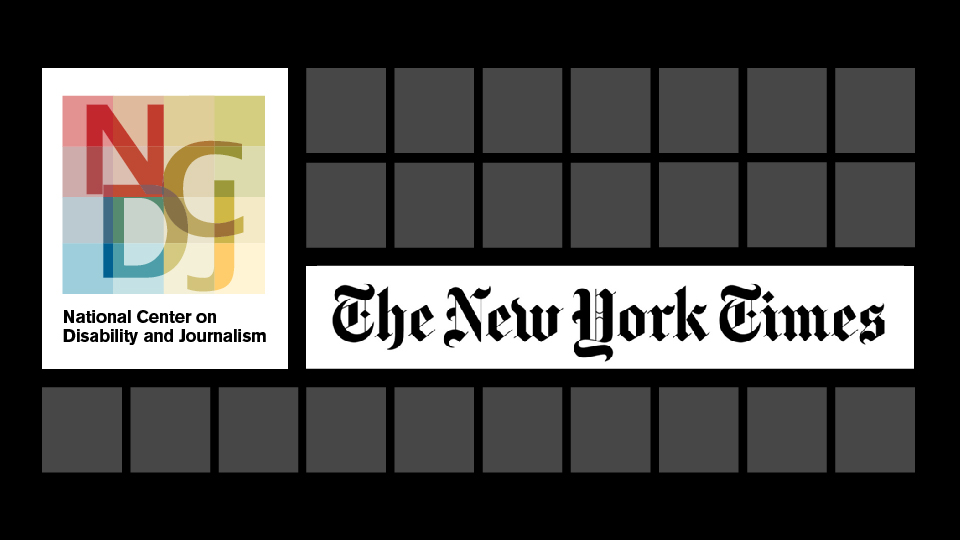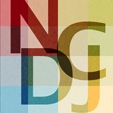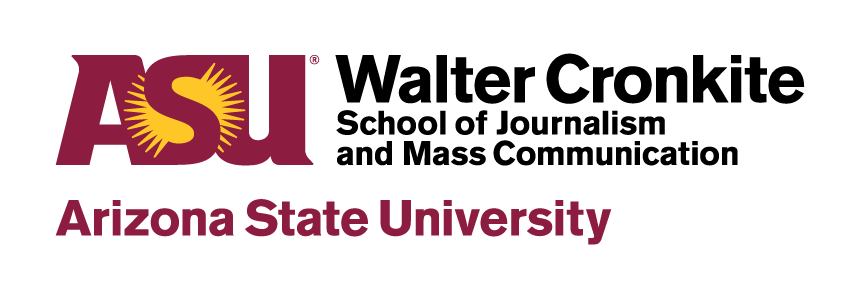This series will provide some context and a deeper dive into the significance and meaning of this growing Disability Economy while underscoring the fact that we have only scratched the surface of the value it can have across various business sectors. Read the full story here.
disability awareness
Accessibility and the Intangibles: How Two Students With Disabilities Chose a College
Read the full story here.
Birth & Betrayal: ‘A price tag on my son’s life’
Watch the story that was awarded the 2022 Collier Prize for State Government Accountability.
Housing the Disabled Amidst Today’s Inflation Crisis
Disabled individuals have been impacted the hardest due to their fixed incomes based upon supplemental security insurance, minimum wages, and other limited government programs. Read more here.
Journalist Works to Improve Coverage, Accessibility of News for the Public
By Rachel Konieczny
National Center on Disability and Journalism
Hannah Wise is on a mission to improve the coverage of disability in the U.S. and make sure news is accessible to the more than 6 million Americans who live with a disability.
Wise is one of eight Donald W. Reynolds Journalism Institute fellowship recipients for the 2021-22 academic year. Formerly a social strategy editor at The New York Times, Wise brings to the project years of experience building relationships between journalists and the communities they cover at the Times and the Dallas Morning News.
For her fellowship at the University of Missouri, she is creating a toolkit to help newsrooms understand how to better cover disability and how to make news products more accessible.
“Every beat is a disability beat, and not just around disability awareness,” Wise said. “It is our job as journalists to speak with accuracy and avoid euphemism, and I think that there’s a big opportunity across the industry for us to raise the bar.”
Part of her project entails creating a form for news organizations to use to find out what questions readers have about disability and what local and national coverage they would like to see.
“We want to make sure that we are providing the information that people want and need,” she said. “The best way to do that is to ask them: What do you want and need?”
In addition to helping news organizations improve their coverage of disability, she hopes to help them learn and use accessibility technology, such as alt text, captions and screen readers.
Wise said part of the challenge is that people are uncomfortable dealing with disability, and journalists are no exception. “Unless you have a disability or someone in your sphere has one, then people are just kind of like, ‘I don’t want to offend anyone’,” she said.
She said the current pandemic makes it more important than ever for journalists to include perspectives from the disability community in their stories.
“I view my job as a journalist to help my community and my readers live smarter, healthier, happier, and more equitable lives,” she said. “At the core, our job is to provide information that people can then take and digest and then inform whatever decision they are going to make.”
As part of her project, Wise, who identifies as a disabled journalist, also created a newsletter, “Disability Matters.” To sign up, go to https://gmail.us6.list-manage.com/subscribe?u=38c612681d8b3e13200731c90&id=137008ef16.
The New York Times, NCDJ Partner to Enhance Coverage of Disability Issues

By Kasey Brammell
The National Center on Disability and Journalism at Arizona State University is partnering with The New York Times to create a new fellowship program to enhance coverage of disability issues and people with disabilities.
The program, to launch later this year, will place an early-career journalist in The Times newsroom each year for the next two years to develop expertise and report on a range of disability issues. It is set to be funded by philanthropy.
The fellow will be part of a larger fellowship cohort at The Times and will receive mentoring from both a Times’ staff member with expertise in covering disabilities and the NCDJ, which provides support and advice to journalists around the world who cover such issues. The NCDJ also will provide training to the Times’ newsroom.
Nearly one in five people in the United States lives with a disability, but these issues are undercovered, said Ted Kim, director of Early Career Journalism Strategy and Recruiting for The New York Times. “Few avenues exist to develop journalistic expertise on disability issues because such beats do not exist at most news outlets,” he said. “The lack of coverage, in turn, results in a lack of awareness about issues that affect a large portion of the country.”
Kristin Gilger, interim dean of the Walter Cronkite School of Journalism and Mass Communication at ASU and director of the NCDJ, echoed the need for more and better coverage of disability issues and people with disabilities. “This fellowship program is an important step in the right direction at one of the nation’s top media institutions,” she said.
The application is now open for the first fellow, who will join The Times in June. Preference will be given to promising early-career journalists who also have experience living with a disability or who have developed a deep understanding of disability through the experiences of a family member or loved one. The deadline to submit an application is 5 p.m., New York Time, on March 31, 2021. Applicants are advised to submit well before the deadline.
The fellows will be part of The New York Times Fellowship program , a talent pipeline initiative started in 2019 to seed and diversify the next generation of journalists in local newsrooms across America. It trains journalists in reporting, audio, visual and other disciplines.
The National Center on Disability and Journalism is a service of the Walter Cronkite School of Journalism and Mass Communication at ASU. For the past 12 years at Cronkite, the center has provided support and training for journalists and other communications professionals with the goal of improving media coverage of disability issues and people with disabilities.
The Importance And Impact Of The American With Disabilities Act
This past July, we celebrated the Americans with Disabilities Act’s thirtieth year of existence. Nearly 40 million people in America have a disability of some kind (one in eight people, approximately) and this important Act has changed the lives of Americans with various forms of disability, both visible and invisible.
How I Came Out About My Disability
Three writers share how they revealed their disability, to a family member, to a love interest on a dating app and to oneself.
COVID-19 is creating communication barriers for the deaf community
For many people who are deaf or hard of hearing, lip reading, facial expressions and body language are vital to communication, but protective face masks and remote work and school meant to slow the spread of COVID-19 have made it more difficult.
More than 1.1 million people in Arizona are hard of hearing, and more than 20,000 are deaf, according to the Arizona Commission for the Deaf and Hard of Hearing.
Living with a disability during a pandemic
The COVID-19 pandemic has exposed a number of inequalities in our society related to race, gender, class, legal status and age. However, conspicuously missing from much of the media coverage on these issues are the stories of how the crisis is affecting the disabled community.
Read the full article here: https://asunow.asu.edu/20200612-sun-devil-life-living-disability-during-pandemic

